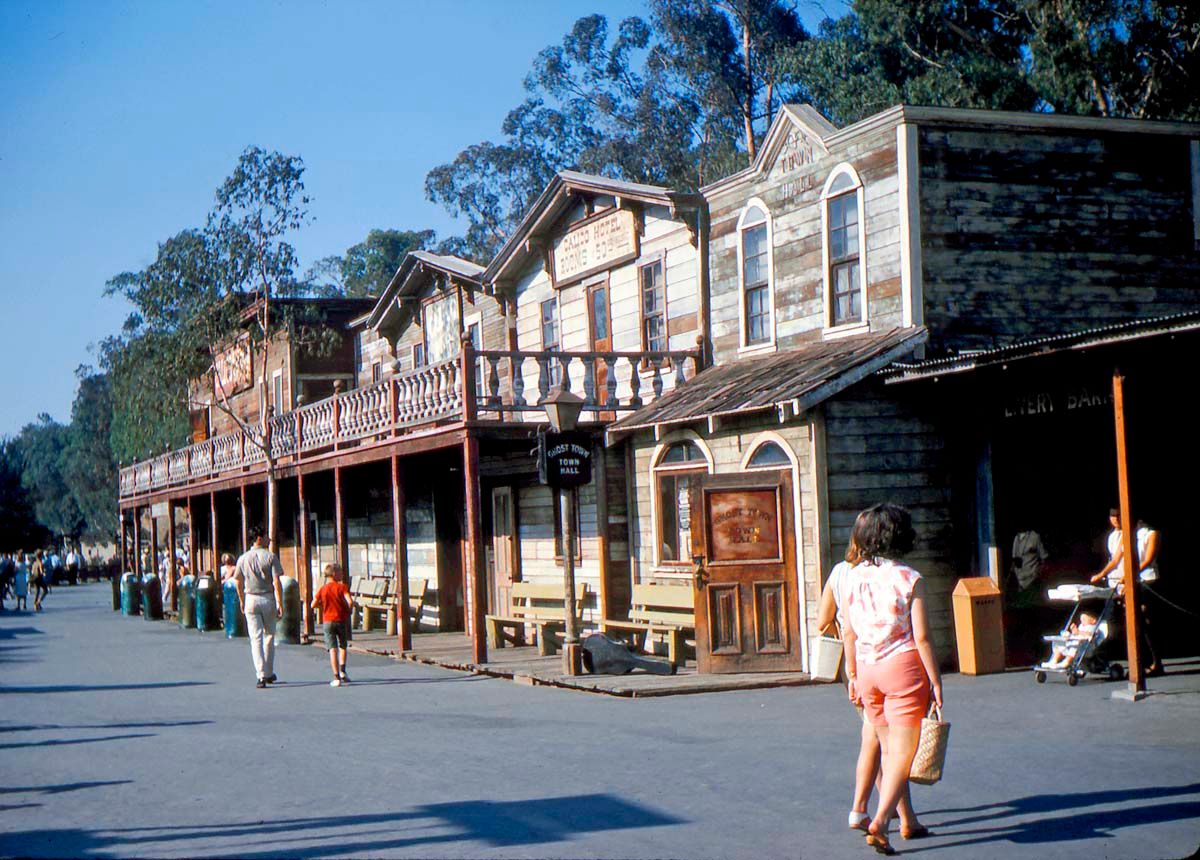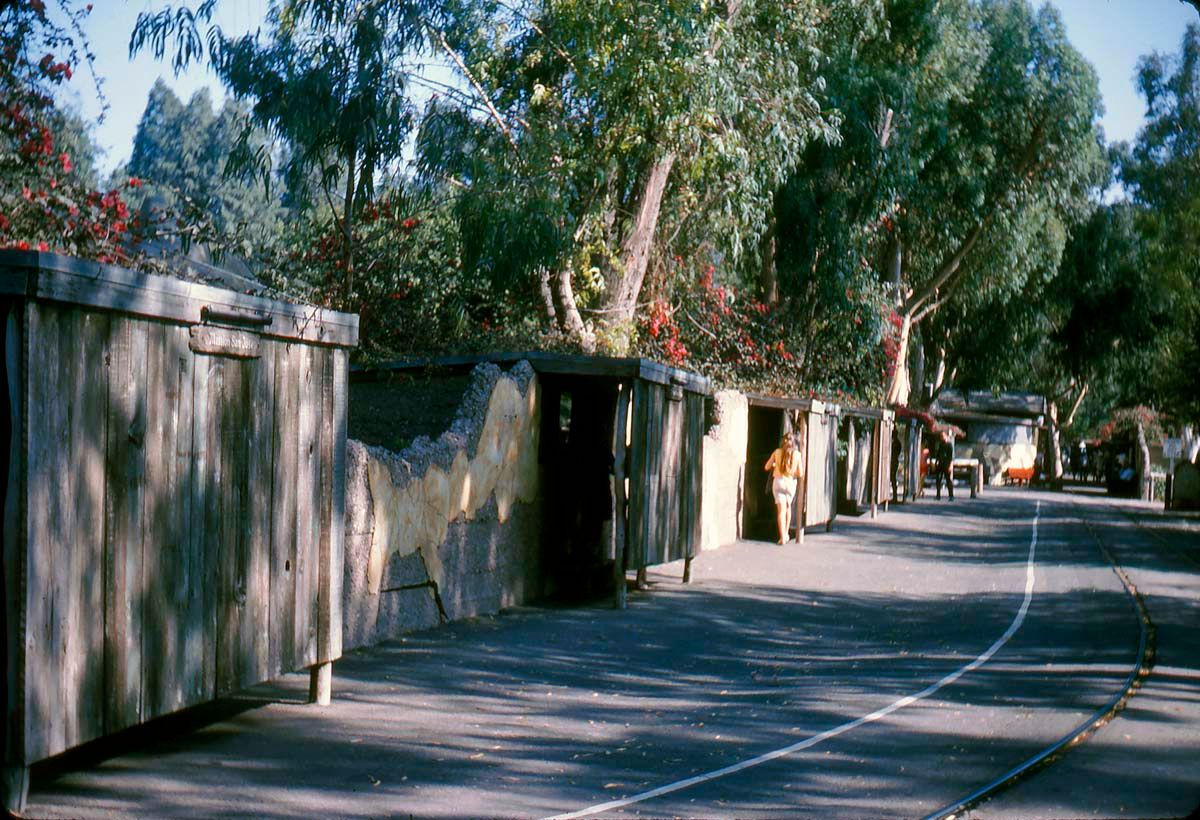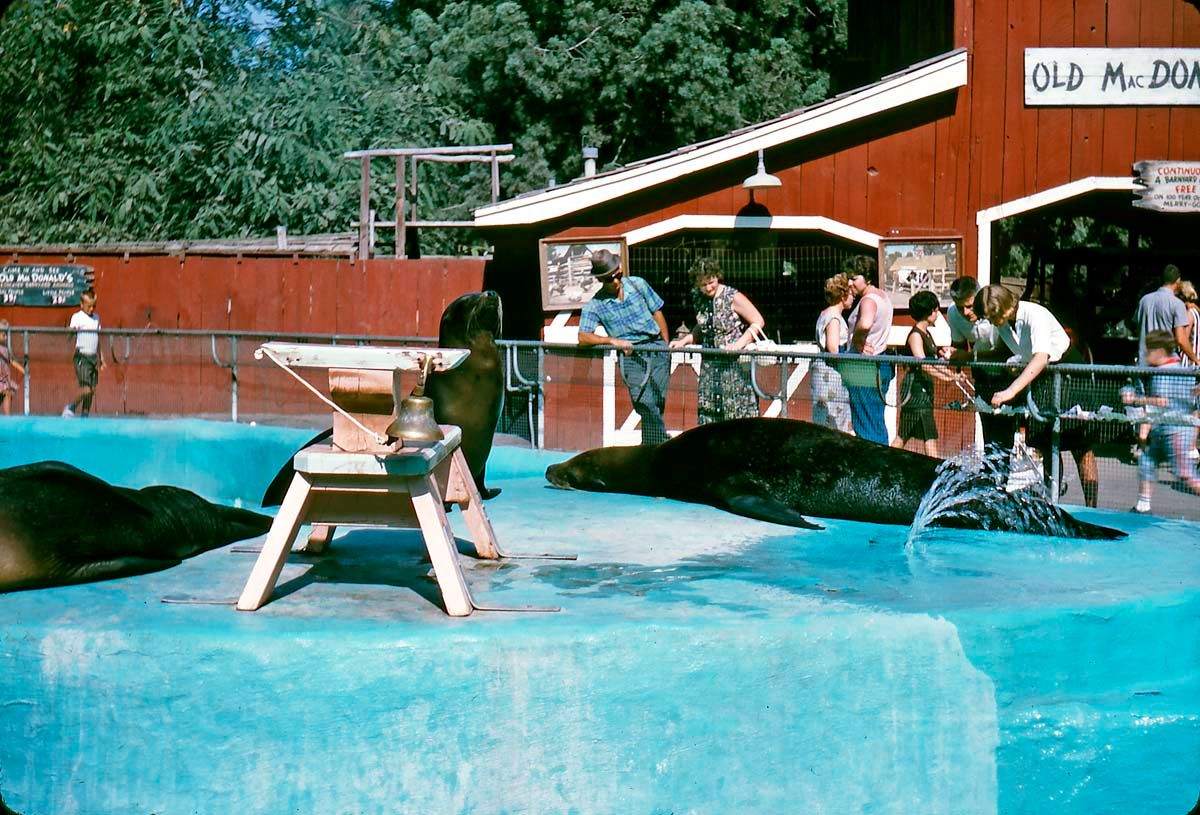3 from Knott's, July 14 1964
Here's a nice look at Knott's Berry Farm's "School Road". You know, the one with the saloon at the end! There is also a Livery Barn, a Town Hall, and the Calico Hotel. With the exception of the Saloon at the end, were these other structures empty? If the photographer had timed it just right, we would have seen the train at the end of the street.
Once upon a time, there were beautiful models of each of the 21 Spanish missions in California, founded by Father Junipero Serra. I sure would love to see photos of all of them; in grade school, I had to build a diorama of Mission San Carlos Borromeo de Carmelo. I used sugar cubes as bricks, mosty. It took forever. And then, as I took it to school, a swarm of hungry bees swooped down and carried the model away. At least that's what I told the teacher.
Man, those seals had the life! Just lounging around in the sun, plenty of fish and popcorn to eat, a bell to ring when folks weren't paying attention... what more could you want?

10 comments:
Yay, vintage Knott's pics! I remember the missions (why did they take those out!), but I don't remember the wooden walls in front of them. I wonder when those came down?
What a neat idea. The old California Missions have suffered a decline in public interest (supposedly). In say the 1920s - 1950s, there was a lot of interest in the "romance" of "Old California." The display at Knotts speaks for the interest and their removal is part of the cause or symptom, however you view it.
If anyone's wanting to visit, Mission San Miguel has just recently reopened the repaired & reinforced chapel after the quake several years ago. One can still see some original painting etc, much of what's left of the original missions are to be seen there.
You may envy the seals but remember their fates were sealed.
What a nice day it was at Knotts. :)
Great post, Major.
The little wooden walls kept the sun from reflecting on the glass windows. In addition, some of the models had light fixtures and evening scenes so it was crucial that the lighting be controlled. Not sure when they removed them...
We have one of the enclosures here in the warehouse - and some pretty sorry photos of the missions themselves in later years. Not really a pretty sight.
Neat Vintage and Rare Mission Row photo! Hey, I used to have to make those dioramas too, mine were never as nice as the "Cool Kids"... In fact, mine stunk!
Oh, the California Missions. For those of you from out-of-state, California history was a required topic of 4th grade history for one semester (the other required subject was Japan).
These models would have been very popular with kids that age group. I got out of having to do a diorama by drawing the missions - all 21. And I still have them in my "treasures" box.
Yeah - making a scale model mission was pretty much a mandate at SoCal elementary school - at least in the 70s. The last time I saw the Leon DeVolo Missions, as Berm says, they were in pretty sad shape - but not un-repairable. Who knows where they are now? Guy Tester told me that originally, they put up the wall you see here to keep people from wandering into the stagecoach path - which is what was happening! From that, Walter Knott saw a "blank canvas" of sorts - which eventually led him to hire DeVolo to create the missions.
What was that metal track in photo 2 used for?
210Frwy, that metal track was for the San Francisco cable cars. See my post from November 17 for a look at them!
I remember the old mission dioramas vividly. My Dad was really into history and we traveled up and down the state, eventually visiting more than half of the 21 missions. Santa Inés out near Solvang is my favorite. I chose Mission Santa Barbara for my 4th grade California history assignment. Popsicle sticks and modeling clay were the materials of choice. I recall my engineer Dad trying to explain scale to me (fer crying out loud, I was nine!)
I should have won the "Best mission model without using a single right angle" award, but didn't.
Post a Comment